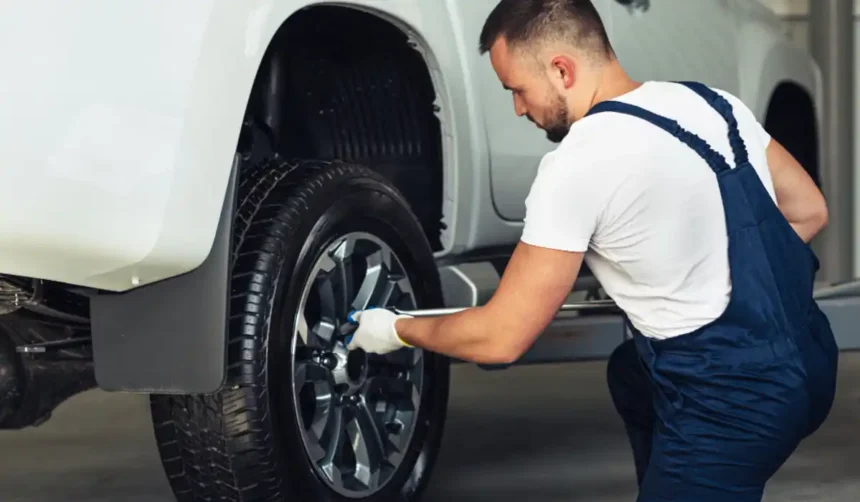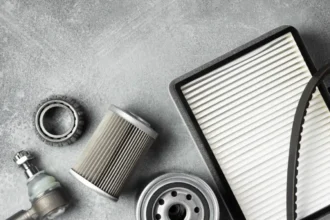Imagine driving down a straight road, but your car feels like it’s constantly pulling to one side. Or perhaps you’ve noticed uneven wear on your tires, even though they’re relatively new. These signs often point to one issue: poor tire alignment. Tire alignment plays a critical role in car maintenance, affecting everything from tire longevity to vehicle safety and fuel efficiency.
In this article, we’ll explore why tire alignment matters, the importance of keeping your vehicle properly aligned, and how to get it done. Understanding these details can help you maintain a smoother, safer driving experience while saving money on tires and repairs in the long run.
The Importance of Tire Alignment in Car Maintenance
Tire alignment, also known as wheel alignment, involves adjusting the angles of your car’s wheels to match the manufacturer’s specifications. Proper alignment ensures that your tires make even contact with the road, reducing wear and tear and improving your vehicle’s overall performance.
Here are some key reasons why tire alignment is crucial for car maintenance:

- Improved Handling and Safety: Proper alignment keeps your vehicle stable, allowing for smoother steering and reducing the risk of accidents caused by pulling or drifting.
- Extended Tire Life: Misaligned tires wear out unevenly, leading to premature replacement. Aligning your tires regularly helps them last longer.
- Better Fuel Efficiency: Misaligned tires create more rolling resistance, forcing your engine to work harder and consume more fuel. A well-aligned car can save you money at the pump.
- Enhanced Driving Comfort: Driving with misaligned tires can lead to a rough, uncomfortable ride. Proper alignment ensures a smoother journey.
How to Tell If Your Car Needs Tire Alignment
Recognizing when your vehicle needs a tire alignment can prevent bigger issues down the road. Below are some of the most common signs that indicate it’s time to get your tires aligned:
- Uneven or Rapid Tire Wear: If you notice that one or more tires are wearing faster than others, especially on the edges, alignment could be the issue.
- Steering Wheel Off-Center: If your steering wheel doesn’t return to the center position after making a turn or feels crooked while driving straight, alignment may be necessary.
- Car Pulling to One Side: Your vehicle pulling left or right without input from the driver is a clear sign of misalignment.
- Vibrating Steering Wheel: Vibrations in the steering wheel while driving could mean your tires are out of alignment.
Read More: Car Maintenance Tips for Hot Weather
Addressing these signs promptly can save you from more expensive repairs and replacement costs.
Step-by-Step Guide: How to Get Tire Alignment Done
Now that we understand why tire alignment matters, let’s discuss how the alignment process works and what you can expect when taking your vehicle to a professional for an alignment service.
1. Inspect the Vehicle
The mechanic will first inspect the vehicle’s tires, suspension, and steering components to identify any obvious issues or damage that could affect alignment. This includes checking tire pressure, as underinflated or overinflated tires can distort the alignment process.
2. Mounting the Car on an Alignment Rack
The vehicle is driven onto an alignment rack, where all four wheels are adjusted according to the manufacturer’s specifications. This equipment includes sensors attached to the wheels to measure their current alignment angles.
3. Checking and Adjusting the Angles
The mechanic will focus on three primary alignment angles:
- Camber: The tilt of the tire when viewed from the front. Excessive tilt can lead to uneven tire wear.
- Toe: The angle of the tires when viewed from above. Too much inward or outward toe causes tire wear and steering problems.
- Caster: The angle of the steering axis when viewed from the side of the vehicle. Caster affects the vehicle’s stability and steering response.
Each of these angles is fine-tuned to ensure the wheels are perfectly aligned with the vehicle’s specifications.
4. Final Test Drive
After making adjustments, the mechanic will perform a test drive to ensure the vehicle tracks straight and the steering feels normal. Any remaining tweaks are made at this point.
Table: Alignment Angles and Their Importance
| Alignment Angle | Description | Effect of Misalignment |
|---|---|---|
| Camber | Tilt of the tire (inward or outward) | Uneven tire wear, poor handling |
| Toe | Direction the tires point (inward/outward) | Steering problems, tire wear |
| Caster | Steering axis angle | Vehicle stability, steering response |
How Often Should You Get Tire Alignment Done?
How often you should get your tires aligned depends on several factors, such as your driving habits, road conditions, and the age of your vehicle. A general rule of thumb is to check your alignment every 6,000 to 10,000 miles, or at least once a year.
Additionally, it’s a good idea to have your alignment checked if:
- You’ve hit a pothole or curb.
- You’ve installed new tires.
- You notice any of the signs of misalignment mentioned above.
Tips for Maintaining Proper Tire Alignment
Maintaining proper tire alignment involves more than just scheduling regular alignments. Here are a few additional tips to help keep your car aligned and your tires in good shape:
- Rotate Your Tires Regularly: Regular tire rotation helps ensure even wear and can extend the life of your tires. Most experts recommend rotating your tires every 5,000 to 7,000 miles.
- Avoid Potholes and Rough Terrain: Hitting potholes or driving on rough roads can easily knock your tires out of alignment. Avoid these obstacles whenever possible to maintain proper alignment.
- Monitor Tire Pressure: Keeping your tires properly inflated helps prevent uneven wear and reduces the risk of alignment issues.
- Check Alignment After Tire Replacement: If you’ve had new tires installed, it’s a good idea to have the alignment checked. Misalignment can cause your new tires to wear unevenly from the start.
Conclusion
Tire alignment is a crucial aspect of car maintenance that affects your vehicle’s performance, safety, and longevity. By understanding the importance of proper alignment and getting it checked regularly, you can ensure that your car handles smoothly, your tires last longer, and you save money on fuel and repairs. Whether you’re experiencing the signs of misalignment or just want to keep your car in peak condition, regular tire alignment should be part of your maintenance routine.
Proper alignment doesn’t just make your car run smoother—it keeps you safe on the road.








